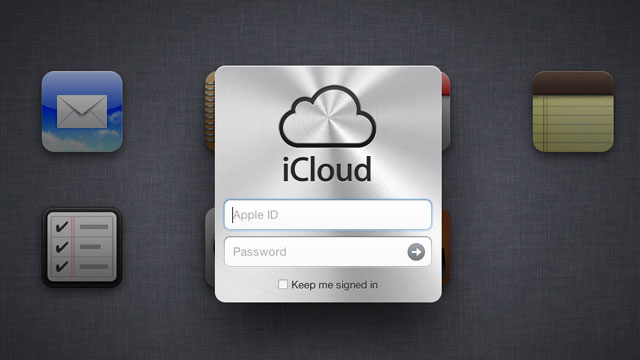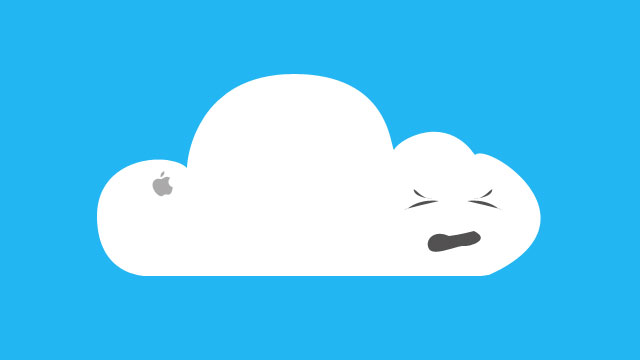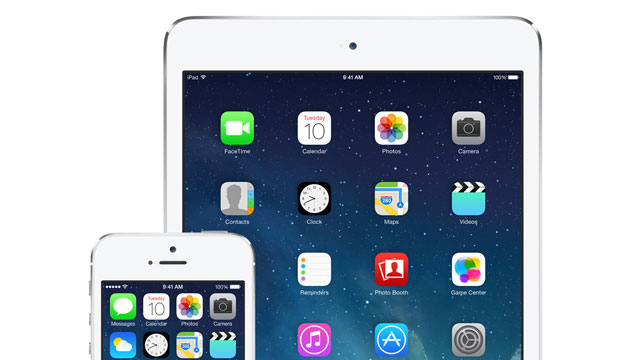When you buy an Apple device, you agree to a bunch of restrictions. You don’t have as much control over your phone, third-party apps don’t have access to all the features that Apple’s software does, and lots of other apps are banned. But if you agree to live under Apple’s roof, you have the benefits of faster, super-integrated apps. So what’s better: going your own way, or life as Apple intended?
Title image remixed from an original by Liewluck (Shutterstock).
I decided to find out if using an iPhone, as Apple intended it, worked better than resorting to crippled (but still awesome) third-party apps. I put myself through this supposed misery for a month and learned some things I already knew and a few things that surprised me. I also approached this trial partially on iOS 6 and partially on iOS 7 to sample the modest freedoms we’re gaining in the latest version of Apple’s mobile OS. The verdict? Apple’s walled garden may make a lot of sense for those who just want a seamless experience with their phone, but not for anyone who thinks of their mobile like a superpower. Let’s take a look at the pros and cons of living with Apple’s restrictions.
You Gain Seamless Integration (in Most Cases)

When you sign up for the Apple ecosystem, almost everything in it works together. The company designs its software with numerous advantages, so third-party apps can’t really compete with them. Apple reserves a variety of APIs — that’s application programming interfaces — just for its apps. And, until iOS 7, it only allowed its own software to fully run in the background. You just can’t get these features if you go with a third-party solution.
Let’s take a look at what you gain with the default apps:
-
Email integrates with everything. When you want to send a photo, apps naturally call up Apple’s default interface. They don’t request Sparrow, Gmail, Evomail or whatever else you prefer. Even if you use a third-party email app, you still kind of have to configure your accounts in iOS anyway, because you’ll have to use it for sharing within apps no matter what. Sticking with it as your default mail app eliminates jumping around.
- Apple’s apps integrate with Siri out of the box. Siri can add notes and reminders to your phone, start navigation or perform other tasks much faster than you can in most circumstances. Unfortunately, Siri only works with Apple’s built-in apps, so you have to resort to typing in lots of third-party alternatives. A jailbreak can add enhanced functionality, but only users of iOS 6.1.2 (and earlier) have that opportunity, and it still doesn’t cover everything.
-
Your settings sync everywhere Apple approves, which works quite well if you buy into their entire ecosystem. If you only have iDevices and Macs, you’re covered. If not, you just don’t get that benefit. Of course, if you just care about syncing your personal data (more on this later) you can access it on any device through iCloud.com.
Now, let’s take a look at what you lose:
-
You have to use Safari. If you sync browser data with Safari, you can’t use it on your Android tablet or other device. (Windows users, however, can sync Safari bookmarks and data to Internet Explorer.) The same goes for most browsers, and you certainly make a similar sacrifice by using something like Chrome, but at least Chrome gives you access throughout all platforms, and it’s actually a great browser. Safari works really well as a mobile option, but it doesn’t provide important features you get with Chrome on the desktop or even on the iPhone. However you approach it, you lose out somehow with Safari.
-
You lose native app support on non-Apple platforms. Other apps, like Notes and Reminders, don’t have native apps on Windows or Android. (You can, however, use iCloud sync to transfer data to native Windows apps.) Of course, Apple provides access to your data on iCloud.com so you can grab it from anywhere if you need to. While not ideal, it doesn’t lock you out (which makes this a minor disadvantage).
-
Apple Mail doesn’t like Gmail as much as some apps, so you lose out on a bunch of Gmail-specific features and paradigms. I don’t consider this a downside, but die-hard Gmail fans tend to hate the built-in Mail app because it lacks the option to archive or delete (you have to choose one), stars (flags instead), labels (folders instead), priority inbox and any other special feature Google offers.
I found the advantages often outweighed the problems here. Apple provides a well-integrated experience, and it doesn’t require that you sacrifice too much. While I prefer Sparrow as a mail app, I like using one Mail app instead of two. The same goes for the web browser, but even more so due to so many links automatically opening in Safari. Third-party app replacements require a balancing act, and if you just want a phone that handles the basics elegantly, it just isn’t worth the trouble.
Apple Doesn’t Understand the Internet, and You Suffer For It

Apple doesn’t understand the internet. It can’t handle synchronisation as well as Google and other companies. Mind you, synchronisation isn’t easy. You’ll boggle your mind if you try to think up an algorithm that can account for any possible change in a file and then figure out which one to keep across all your devices. Even so, Apple tried to oversimplify the problem, which just made things worse. It keeps local and cloud-based copies of your data, and you can turn synchronisation on without that data ever leaving your device because you accidentally stored it in the wrong section.
Let’s take a look at what you gain with Apple’s internet-based services:
-
iMessage. While not perfect — something we’ll get to shortly — iMessage makes communicating much easier if you have iDevices and Macs. If you hate texting on your phone and prefer to type things out on a keyboard, you can use your Mac to respond. If you forego Apple services, you have to poke away at your iPhone.
-
All your personal data syncs and backs up automatically. In a perfect world, all your Apple data will sync. If you set it up right, you get everything everywhere — so long as you only use Apple platforms. This can help a lot of people who stick with in the Apple universe, but if you step outside it becomes very restrictive.
-
iTunes Match eliminates the need to sync with iTunes. It didn’t work so well when it began, but now iTunes Match makes downloading the music you want and keeping the rest in the cloud a real possibility. I think this has more to do with Apple’s adoption of LTE than anything else.
Now, let’s take a look at what you lose by sticking with Apple services:
-
You sacrifice consistency and reliability. To give Apple due credit, iCloud works a lot better than it initially did and significantly better than its predecessors. That said, iCloud is much less reliable than other solutions. For reasons described earlier, sometimes things just don’t work because you didn’t set them up right — a very un-Apple-like problem, ironically — and network issues cause all sorts of problems from time to time.
-
iMessage jumbles things up, causing your conversations to appear out of order on other devices. If you start a conversation on one device and switch to another, you might find certain messages came in at the wrong times, you’re missing half the conversation, or you’re missing the entire thing. That said, it still beats pretty much any third-party option around and hopefully iOS 7 (and the forthcoming OS X Mavericks) addresses this issue. So far, we have no official word or evidence but just hopeful speculation.
-
You can’t use cheaper, third-party music options like Google Play Music. That said, whatever happened to the Google Play Music app iOS users were promised?
When it comes to the cloud, Apple just doesn’t do a great job. I still like a lot of the services and think iMessage justifies its bugs. That said, almost everything causes a gigantic headache and you shouldn’t even bother. iOS allows you to sync with Google services, and you should just use those instead.
Apple’s Apps (Usually) Perform Better Than Third-Party Ones

Apple’s apps have access to private APIs it doesn’t provide to third-party developers. That allows it to make its apps perform magical tasks other apps cannot. Sure, a developer could find out about a secret API and use it, but then Apple would remove the app from the App Store in the event it finds out. When it comes to sheer performance, both in speed and in battery life, Apple’s apps will almost always perform better.
Let’s take a look at the advantages of Apple’s performance gains:
-
In general, you get faster speeds all around. We’ll get more specific in a minute, but Apple’s apps just perform a heck of a lot better overall. Some developers manage to eke out every last bit of performance and you’d never really know, but certain ones (I’m looking at you, EvoMail), can’t seem to grasp it. With Apple, you get solid performance with pretty much everything — even the App Store, finally, in iOS 7.
-
Safari wins just about every JavaScript benchmark because it has access to a JavaScript engine that uses lower-level system processes that other apps can’t. This sucks, but what can you do. Apple keeps their advantage here by not sharing.
-
Apple video apps use less battery and less power because they use hardware acceleration. Other video apps, like VLC, struggle to keep up. On older devices, apps like VLC can’t even play HD video — something Apple’s video app does just fine.
Now let’s take a look at what you lose:
-
You get fewer features with Apple apps, which means if you want to play an MKV file in VLC or use Chrome because it syncs your bookmarks, you can’t. You need to take the time to convert your video and sync your Chrome bookmarks with Safari just to make it work with your Apple solution. This is really annoying.
-
Apple rarely updates its apps. In fact, Apple default apps tend to only get updates with system updates. Want new features? You have to wait a year.
Fortunately you can easily mix and match here. When Apple apps work better, you can use them primarily and have a third-party app fill in the gaps. That doesn’t work in every case (e.g. bookmark syncing with Chrome) but it does with most.
What’s the Bottom Line?
While third-party apps may work better, you didn’t buy an iPhone because you wanted choice. People buy iPhones because they work well and they look nice. You know what to expect from Apple’s mobile darling, and that’s comforting if you rely on your smartphone for many daily tasks. You don’t have to maintain it like a computer. You know it will be there for you when you need it. You can get fed up with restrictions and a lack of options, but do you really need your phone to do everything you ever wanted? Do you really need that much choice?
You kind of have to accept the ramifications of going Apple. Your money votes for Apple’s walled garden whether you like it or not. You chose a device that sacrifices choice for comfort. If you don’t like that, you probably purchased the wrong smartphone. So should you just stop worrying and love the walled garden? Yes, to some extent. When the restrictions make your life complicated and frustrating because a third-party app can’t do what you want it to do, let it go. If you can get the experience you want by dumping parts of Apple’s proposed lifestyle, go right ahead. In the end, if you can’t get what you want with iOS you can always jump ship to Android. It all comes down to the types of sacrifices you want to make.

Comments
8 responses to “A Month Inside Apple’s Walled Garden: It’s Not As Bad As You’d Think”
A well informed article weighing the pros and cons of the platform. I find that on macs if you really prefer to have both the flexibility and integration just have parallels installed with Windows (very important in some lines of work where software is PC-centric). Google integration is very cloud heavy so it works pretty well (not perfect) on an iPhone anyways. 80-90% of the populations don’t use their phones to the extent where the differences between the platforms become glaring…
Now we just sit back and wait for the flames….Is that a angry mob in the distance I see???
Haven’t Apple been accused of limiting the processing power of third party browsers so that Safari will always win out? I can’t find any sources at a glance (other than reports that web apps perform 2-2.5 times slower when launched from the homescreen), but I do seem to recall that third parties (such as Google) weren’t allowed to tap into the full potential of Safari’s javascript / webkit engine, making any webbrowser other than Safari, go slower during benchmarks..
That’s the one — the JS engine used by Safari is off-limits to 3rd party apps on the platform.
Butter-climp, butter-clamp, you’re right:
http://www.baekdal.com/opinion/apple-is-limiting-the-new-google-chrome-for-ios
Not sure how up-to-date this info is (with Apple’s changing rules in regards to apps), but I’d say it’d still be true..
There’s no conspiracy here, Apple simply limit the use of Nitro Javascript Engine for 3rd party apps, which is common knowledge. You can unlock it by simply installing Nitrous after a jailbreak. I did it and now crome and facebook apps run as fast as safari. http://lifehacker.com/5930405/nitrous-speeds-up-google-chrome-for-iphone-with-the-nitro-javascript-engine
It seems to me that iPhones are to mobile phones what the Wii U is to video games – except, of course, for differing perceptions of the brands of each.
Just letting you know that you can actually watch MKV videos using VLC for iOS without converting them first. You can do this using iTunes. When you connect your iPhone to iTunes and go to the ‘Apps’ tab for your phone within iTunes, you will see all your apps that you normally sync. If you scroll down, you will find a list of apps you can share ‘documents’ (files) with. VLC is one of those apps you can share files with. Click on the VLC icon and then click the ‘Add Files…’ button (I think that’s what it’s called) and simply select the MKV video file (or any other format file that VLC supports) from your hard drive and iTunes will sync it up to the VLC app on your device. This feature has been available for quite some time now, but not many people seem to know about it. This is not only limited to VLC. You should be able to do this with most apps that work with documents or files. Additionally, VLC for iOS also has a WIFI upload feature that let’s you upload video files to the app over your LAN.
Hope this helps someone. 🙂
Nicely balanced article.
The only bit I’d disagree with is that “iTunes Match eliminates the need to sync with iTunes”. I still have over 1,000 songs that I can’t sync with iTunes Match – they either stall on download, or delete themselves a day or two later. I’ve used it to clean up and cloudify my CD collection, but I doubt I’ll renew it again – there’s better alternatives now.
The only other bit I’d take issue with is the impression that the Apple ecosystem is a “it just works” one. Apple seem to be moving away from that, now. Still far simpler than Android or WP8, but a tech savvy friend/family member can get Android over the line now, and I think Microsoft has the capability and position to draw level in 1-2 years, if it can stop repeatedly shooting itself in the foot.
There is always a way – if you want it to be as unsecured as android.
There is the jail break option.
More accurate summary:
* iTunes is unnecessary and awful. Creates bottlenecks. Can’t just copy things on/off. When iTunes stuffs up, you’re buggered.
* Apple supports very few formats. Very little interoperability with non-Apple devices like WDTV that play everything.
* On Android, you get to see the permissions an App wants (eg. Phone book access, etc) – even before you download. No such luck with IOS.
* Apple hides most settings, eg. Audio volume. There are at least 6 audio volumes in IOS, but there’s only a slider for one. If you’re unlucky enough to have the volume go nuts, you can hear/make calls – but can’t play music. Even Apple couldn’t solve that one…. I solved it after a few months. Would never happen if I had settings in the first place.
I think that about sums up Apple’s walled garden. You may be surprised to know my only phone is an Apple – and I fight the walled garden constantly. If it weren’t for all of the apps I’ve bought, I would have gone Android already.